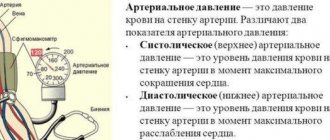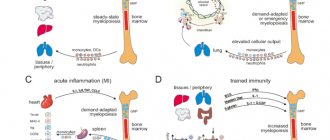Complexes with this research
For those who are at risk of COVID-19 Diagnosis of diseases complicating the course of coronavirus infection 4,510 ₽ Composition
Male check-up No. 1 39 studies for an annual preventive examination 18,570 ₽ Composition
Advanced anti-aging diagnostics in postmenopause Advanced monitoring of age-related changes during postmenopause RUB 29,230 Composition
IN OTHER COMPLEXES
- Anti-aging diagnostics in postmenopause RUB 12,630
- Diabetes monitoring RUB 1,900
- Women's anti-aging diagnostics RUB 12,070
- Biochemistry of blood. 19 indicators 6,280 ₽
- Preventive check-up 6,300 ₽
Biochemical analysis: albumin
Maintaining optimal levels of this protein is extremely important for the functioning of the body as a whole. The volume of blood circulating in the body depends on this. In addition, the protein is responsible for regulating osmotic pressure. This indicator changes under the influence of many factors (for example, after eating salty foods). Therefore, its regulation is a very important process. Albumin is also responsible for the transport and storage of many biological compounds and amino acids. When examining your health status, the ALB level is one of the key indicators.
Detailed description of the study
Albumin is a blood plasma protein that, by mass, occupies more than half of all plasma proteins. It performs a number of important physiological functions:
- Maintaining physical and chemical blood parameters: viscosity, pH, oncotic pressure;
- Regulation of circulating blood volume and its balance with intercellular fluid;
- Transport of certain hormones, drugs, fats and their complexes;
- Calcium binding and participation in its metabolism;
- Protein reserve: if there is not enough protein in food, albumin can become its source.
Albumin is synthesized in the liver under the influence of thyroid hormones and growth factors, and is excreted by the kidneys. If too little of it is produced in the liver or if it is excessively excreted in the urine, its plasma concentration decreases. This condition is called hypoalbuminemia.
The causes of low albumin levels can be acute and chronic liver diseases, which affects its synthetic function, kidney pathologies, and insufficient protein intake from food. Hypoalbuminemia can be a manifestation of hormonal diseases, intestinal pathologies and cancer. Regardless of the cause, a decrease in plasma albumin levels manifests itself externally as edema.
Physiologically, this is reflected in the properties of blood and transport functions. For example, the content of free molecules of drugs taken in the blood will increase. This may increase their side effects.
Increases in plasma albumin levels are rare: with dehydration or recent intravenous protein administration.
Albumin
Individual, depending on the indications and clinical situation. Typically, adults are administered albumin at a dose of 2-4 ml (0.2-0.4 g) per kg of body weight daily or every other day until a therapeutic effect is achieved; for children, the usual single dose is no more than 3 ml/kg.
The drug can be used in premature infants.
When treating hypovolemic shock
the volume and rate of albumin infusion used should be tailored to the individual patient's response. It is necessary to monitor hemodynamic parameters and observe the usual precautions to prevent volume overload of the circulatory system. The initial dose can be 25 g (0.3-0.4 g albumin or 3-4 ml of the drug per kg body weight); no more than 250 g are administered over 48 hours. The total dose should not exceed the albumin level of a healthy person, i.e. approximately 2 g per kg body weight in the absence of active bleeding. In children, a single dose can reach 0.5-1 g per kg of body weight.
In the treatment of burn disease
albumin administration begins no earlier than 24 hours after thermal injury, since by this time capillary permeability is usually normalized. The therapy should maintain plasma albumin concentration at 20-30 g/l and oncotic pressure 20 mmHg. (equivalent to a total protein concentration of 52 g/L). The duration of therapy is determined by the dynamics of protein loss from burned areas and in the urine. At all stages of treatment of burn disease, it is necessary to carefully monitor the patient’s hemodynamics and water-electrolyte balance.
For filling heart-lung machines
albumin and crystalloid solutions are used until a hematocrit level of 20% and an albumin concentration of 25 g/l are achieved.
For purulent-septic conditions
depending on the severity of intoxication and the degree of hemodynamic disturbances, the single dose can be increased to 7 ml of the drug (0.7 g of albumin) per kg of body weight.
The use of albumin in the treatment of patients with acute liver failure
aims to maintain oncotic pressure and relieve intoxication caused, among other things, by high levels of bilirubin. Therapy begins with a single dose of 25 g (0.3-0.4 g of albumin or 3-4 ml of the drug per kg of body weight) and continues until serum albumin reaches 25 g/l, taking into account the general condition of the patient.
Method of administration:
intravenously. The rate of administration should not exceed 40 drops per minute. Injection of albumin solution is acceptable for shocks of various origins to quickly increase blood pressure.
Sources
- Laboratory tests for the study of specific proteins / Ed. Yu.I. Yarets. Gomel. 2015. 64 p.
- Proteins in blood and urine. Analysis of proteinograms and clinical diagnostic significance. Candidate of Biological Sciences, Associate Professor Gorelaya M.V. Dnepropetrovsk 2015.
- Clinical laboratory diagnostics: textbook / Ed. V.V. Dolgova, Federal State Budgetary Educational Institution of Further Professional Education "Russian Medical Academy of Continuing Professional Education". – M.: FGBOU DPO RMANPO. 2021. – 668 p. ISBN 978-5-7249-2608-9
- Clinical laboratory diagnostics: teaching method. manual for students of medical, pediatric and medical-psychological faculties / S.V. Lelevich, V.V. Vorobiev, T.N. Grinevich – Grodno: GrSMU, 2011. – 166 p.
- Abumuslimov S.S., Magomedova Z.A. Total protein and protein fractions in blood donors in Grozny according to automated analysis // Bulletin of KrasGAU. 2021. No. 6.
- National Association for Clinical Nutrition. Clinical recommendations for the diagnosis and correction of nutritional disorders. Moscow 2013.
- MP 2.3.1.2432-08 Norms of physiological needs for energy and nutrients for various groups of the population of the Russian Federation.
- Druzhinina, N. A. Malnutrition in childhood / Druzhinina N. A. - Moscow: GEOTAR-Media, 2021. - 160 p. — ISBN 978-5-9704-5164-9.
conclusions
The amount of ALB is required to diagnose a number of diseases and select the optimal treatment tactics. It characterizes metabolism and overall health. In case of severe symptoms of kidney problems, this test is prescribed first. It can also be carried out as part of a comprehensive examination or after it, if deviations are identified and it is necessary to clarify their nature and cause. Interpretation of the results can only be carried out by a doctor; the test is not intended for self-diagnosis
. In some cases, deviations from the norm are possible in the absence of diseases.
Analysis procedure
What to pay attention to before taking the test?
No special patient preparation is required.
The research material is blood. Blood sampling is performed strictly on an empty stomach.
Some medications may affect test results. Tell your doctor about the medications you take. You should not cancel treatment on your own.
What happens during an albumin blood test?
The healthcare professional will take a blood sample from a vein in your arm using a small needle. Once the needle is inserted, a small amount of blood will be collected in a tube or vial. You may feel a slight tingling sensation as the needle is inserted or withdrawn. The procedure takes less than five minutes.
Are there any risks to the test?
The risk of having a blood test is very low. There may be some mild pain or bruising where the needle was inserted, but most symptoms go away quickly.
Important Notes
Material for research Capillary blood
Children under 7 years of age: venous blood/capillary blood (for special indications). Children over 7 years of age and adults: venous blood. Capillary blood collection for research is carried out only for children under 7 years of age (for special indications)! According to GOST R 53079.4-2008, indications for taking capillary blood are possible: in newborns, in patients with very small or hard-to-reach veins, with large-area burns, and in severely obese patients.
Blood test for total protein
Determining the concentration of proteins in plasma provides important information about the general state of health, the functioning of vital organs and the course of pathological processes. The analysis is carried out as part of a biochemical blood test, which also includes cholesterol, liver function tests, kidney function tests and glucose (measured in mmol/l)¹.
Blood proteins are a special buffer system that maintains the acid-base balance of the plasma in an optimal state - pH 7.37-7.43.² They also affect the viscosity and coagulability of the blood.
In biochemical analysis, the indicator is designated as total protein in the blood (T-Prot) or Total Protein. The laboratory result is given in grams per liter (g/l). In a detailed study, the quantity and percentage of different protein fractions (proteinogram)² are calculated. For analysis, blood is taken from the cubital vein or the vein on the back of the hand.
Proteins account for 6.5-8.5% of the total dry residue of plasma (9-10%)¹. Concentration depends on the rate of their synthesis and destruction, as well as the volume of distribution in bodily fluids and tissues. The indicator may change during the day, after physical activity and a large meal.
Patients are referred for analysis by a therapist or doctor of any other specialty, since total protein is not a specific indicator. Protein metabolism disorders occur with any inflammation, infections, diseases of internal organs and oncology. In rare cases, patients have congenital disorders of protein production.
To test for total protein, blood is taken from the cubital vein. Photo: tridsanu1984 / freepik.com
Preparing for analysis
A laboratory test for serum albumin is performed as part of a blood chemistry test. The training requirements are standard; a detailed description of them is given here.
However, given the high ability of protein to bind, it would not be amiss to recall that a few days before the procedure it is necessary to stop taking any medications, and to exclude fatty, fried foods and alcohol from the diet.
Sources:
- Spinella R, Sawhney R. Albumin in chronic liver disease: structure, functions and therapeutic implications. - Hepatology International, Sep 2015.
- Data from the independent laboratory Invitro.
- Data from Helix laboratory.
- Sridevi Devaraj. Albumin. — Medscape, Jan 2015.
Who needs to get tested
Blood test for albumin
used in conjunction with data from other studies in the diagnosis of many diseases. Most often, the analysis is prescribed for suspected pathologies of the kidneys and liver. Its results are also used to assess the health status of patients with cancer diagnoses, major injuries or burns. The test is prescribed independently or in combination with other tests. The composition of the examination required in a particular case is determined by the doctor based on the patient’s complaints, examination results, and medical history.
Indications
The study is prescribed and its results are interpreted by a general practitioner, therapist, pediatrician, cardiologist, nephrologist, gastroenterologist, surgeon, hepatologist, resuscitator, nutritionist, hematologist.
An albumin test is prescribed for the following conditions:
- Chronic liver and kidney diseases;
- Oncopathology;
- Extensive burns and severe injuries;
- Rheumatic diseases;
- Malabsorption syndrome (impaired absorption of nutrients in the small intestine).
- Assessment of protein-synthetic liver function;
- Nutritional status assessment;
- Differential diagnosis of edematous syndrome.
If you complain of the following symptoms, an albumin test may also be prescribed:
- Jaundice,
- Pathological long-term fatigue,
- Sudden or long-term weight loss
- Prolonged diarrhea
- Symptoms of nephrotic syndrome (swelling around the eyes, legs, ascites).
To assess kidney function, the test can be performed in conjunction with blood nitrogen, blood urea and creatinine tests.







